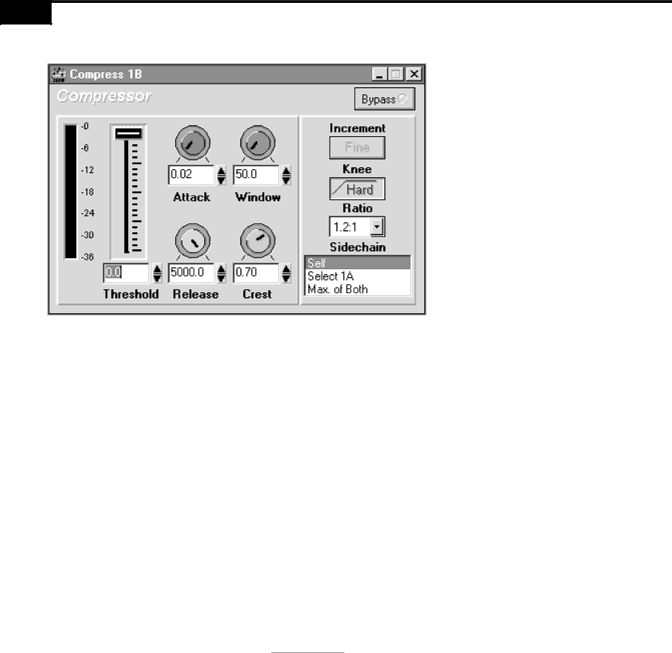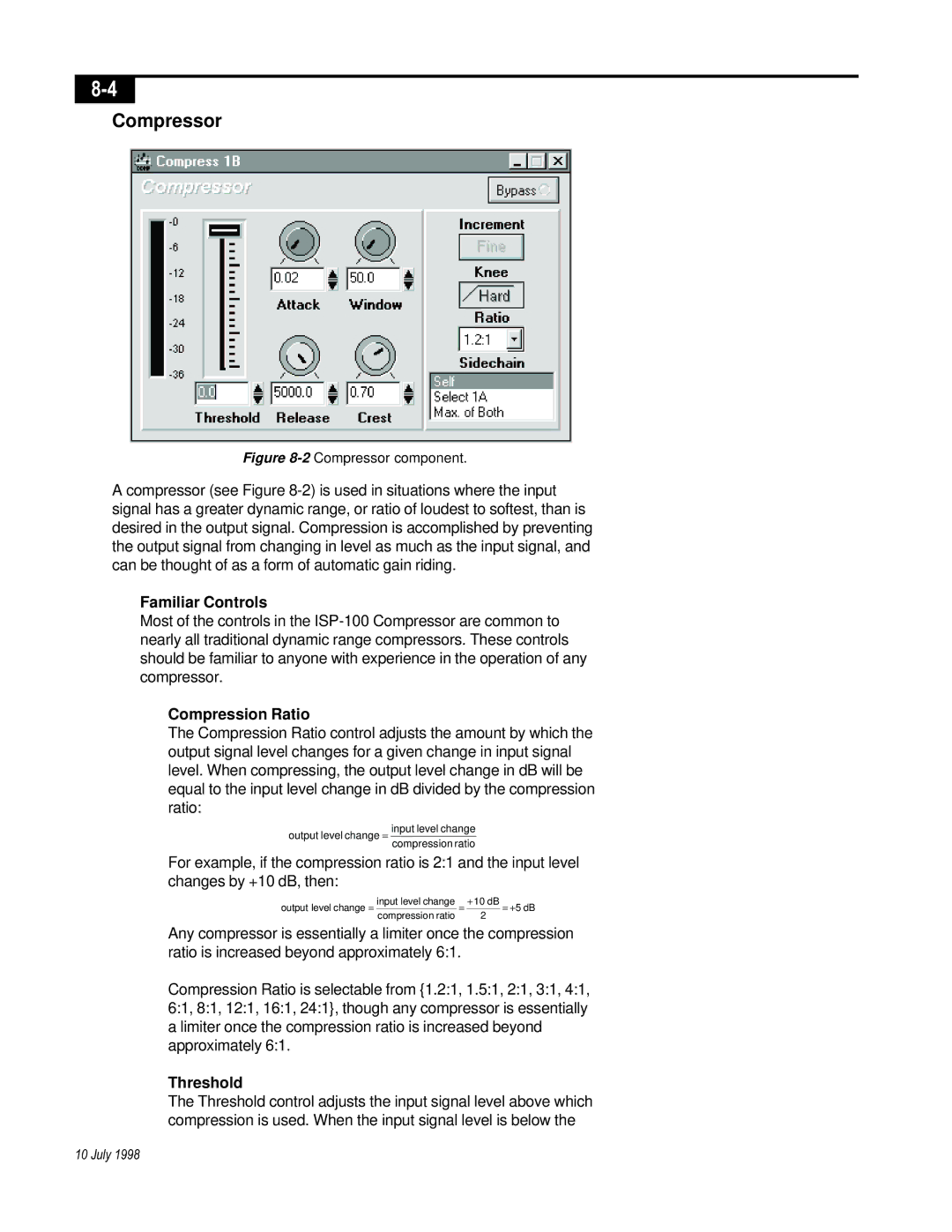
Compressor
Figure 8-2 Compressor component.
A compressor (see Figure
Familiar Controls
Most of the controls in the
Compression Ratio
The Compression Ratio control adjusts the amount by which the output signal level changes for a given change in input signal level. When compressing, the output level change in dB will be equal to the input level change in dB divided by the compression ratio:
output level change
= input level change
compression ratio
For example, if the compression ratio is 2:1 and the input level changes by +10 dB, then:
output level change = | input level change | = + 10 dB = +5 dB |
| compression ratio | 2 |
Any compressor is essentially a limiter once the compression ratio is increased beyond approximately 6:1.
Compression Ratio is selectable from {1.2:1, 1.5:1, 2:1, 3:1, 4:1, 6:1, 8:1, 12:1, 16:1, 24:1}, though any compressor is essentially a limiter once the compression ratio is increased beyond approximately 6:1.
Threshold
The Threshold control adjusts the input signal level above which compression is used. When the input signal level is below the
10 July 1998
